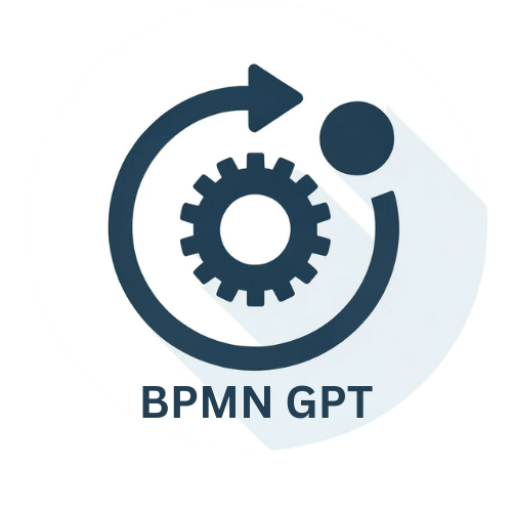Camunda 7-workflow and BPMN platform
AI-powered workflow and process automation
How do I configure a BPMN process in Camunda 7?
What's the best way to handle task assignments in Camunda 7?
Can you explain multi-instance processes in Camunda 7?
How do I integrate Camunda 7 with external systems?
Related Tools
Load More
BPMN-GPT
Business Process Management Notation GPT. Transform your process steps into BPMN code
Spring Master
Expert in Spring and Spring Boot projects, code, syntax, issues, optimizations and more.

Workflow Designer
Designs workflow diagrams from user inputs

BPMN gpt
Friendly and engaging while creating BPMN diagrams.

Process Pro Plus
Intelligent business process analysis. Expert in BPMN 2.0 diagrams, business process description, DMN (DRD)'s creation. Let’s delve into creating BPMN XML code for these algorithmic steps

BPMN Builder
Expert in creating BPMN diagrams for business processes
20.0 / 5 (200 votes)
Introduction to Camunda 7
Camunda 7 is a robust, open-source platform designed for process automation, specifically focusing on Business Process Management (BPM) and Workflow Management. It provides tools to model, execute, and optimize business processes, making it an essential component for organizations aiming to streamline operations and improve efficiency. Camunda 7 leverages the BPMN 2.0 standard for process modeling, DMN for decision management, and CMMN for case management, ensuring compliance with industry standards and facilitating complex process automation. For instance, a banking institution could use Camunda 7 to automate their loan approval process, from initial application to final approval, integrating various checks and decision points into a seamless workflow.

Main Functions of Camunda 7
Process Modeling
Example
BPMN 2.0 for Visual Process Design
Scenario
A retail company uses BPMN 2.0 in Camunda 7 to design a process for handling customer returns. The process model includes steps for receiving the return request, validating the request against purchase records, initiating a refund, and restocking the returned item. This visual model helps in clearly defining each step and responsibility within the process, ensuring that returns are handled efficiently and consistently.
Workflow Automation
Example
Automated Loan Approval Process
Scenario
A bank implements Camunda 7 to automate its loan approval workflow. The process includes customer application submission, credit score check, income verification, risk assessment, and final approval. Camunda 7 orchestrates these tasks, integrating with external systems for credit scores and risk analysis, and automates notifications and approvals, significantly reducing the time and effort required for loan processing.
Decision Management
Example
DMN for Rule-Based Decisions
Scenario
An insurance company uses Camunda 7's DMN engine to automate claim approvals. The decision table defines rules for claim validation based on factors such as claim amount, policyholder history, and type of damage. When a claim is submitted, the DMN engine evaluates it against the predefined rules and automatically decides whether to approve, reject, or escalate the claim, ensuring quick and consistent decision-making.
Ideal Users of Camunda 7
Large Enterprises
Large enterprises with complex business processes benefit significantly from Camunda 7. These organizations often have numerous departments and systems that need to work together seamlessly. Camunda 7 facilitates this by providing a central platform for modeling, automating, and optimizing processes across the enterprise, leading to improved efficiency, reduced operational costs, and enhanced compliance.
Financial Institutions
Banks, insurance companies, and other financial institutions are ideal users of Camunda 7 due to their need for stringent process control and regulatory compliance. Camunda 7 helps these organizations automate complex workflows, such as loan approvals and claims processing, while ensuring adherence to industry regulations and standards. This results in faster processing times, reduced errors, and better customer service.

How to Use Camunda 7
Step 1
Visit aichatonline.org for a free trial without login, also no need for ChatGPT Plus.
Step 2
Download and install Camunda 7 from the official website or your package manager.
Step 3
Configure the Camunda engine by editing the configuration files to match your environment and needs.
Step 4
Deploy your BPMN models and business processes into the Camunda engine using the provided tools or API.
Step 5
Monitor and manage your processes through the Camunda Cockpit, Tasklist, and Admin interfaces to optimize performance and handle tasks.
Try other advanced and practical GPTs
APA 7 Citation Helper
AI-powered APA 7 citation generator.

Shopware 6 Developer Assistant (v1.1.0)
AI-powered guidance for Shopware 6 development.

Expert WPF .NET 6 & 7
AI-Powered Advanced WPF Code Solutions

MudBlazor NET 6 DEV
AI-powered guidance for MudBlazor with .NET 6

Midjourney6 Muse
Unlock your creativity with AI-driven prompt generation

Expert mql4/5
AI-powered trading automation made simple

Blazor .net 8
AI-powered Blazor for Web Development

Logo
Create unique logos with AI precision

LOGO
Design Smarter with AI-Powered LOGO

Logo Maker
AI-powered logo creation made easy

Logo Wizard
Create Unique Logos with AI Power.
Music Maker
AI-powered music creation for everyone.

- Task Management
- Performance Monitoring
- Process Automation
- Workflow Management
- System Integration
Camunda 7 Q&A
What is Camunda 7?
Camunda 7 is a powerful, open-source platform for workflow and business process management. It allows you to model, deploy, and manage business processes in a robust and scalable manner.
What are the prerequisites for using Camunda 7?
To use Camunda 7, you need a Java runtime environment, a relational database (like MySQL or PostgreSQL), and basic knowledge of BPMN (Business Process Model and Notation).
How can Camunda 7 be integrated with existing systems?
Camunda 7 can be integrated with existing systems via its REST API, Java API, and various connectors and plugins that allow for seamless communication with other applications and services.
What are common use cases for Camunda 7?
Common use cases include automating business workflows, managing human tasks, integrating with external systems, and optimizing business processes through real-time monitoring and analytics.
How does Camunda 7 handle scalability?
Camunda 7 is designed for high scalability, supporting clustered deployments and horizontal scaling to handle large volumes of process instances and tasks across distributed environments.